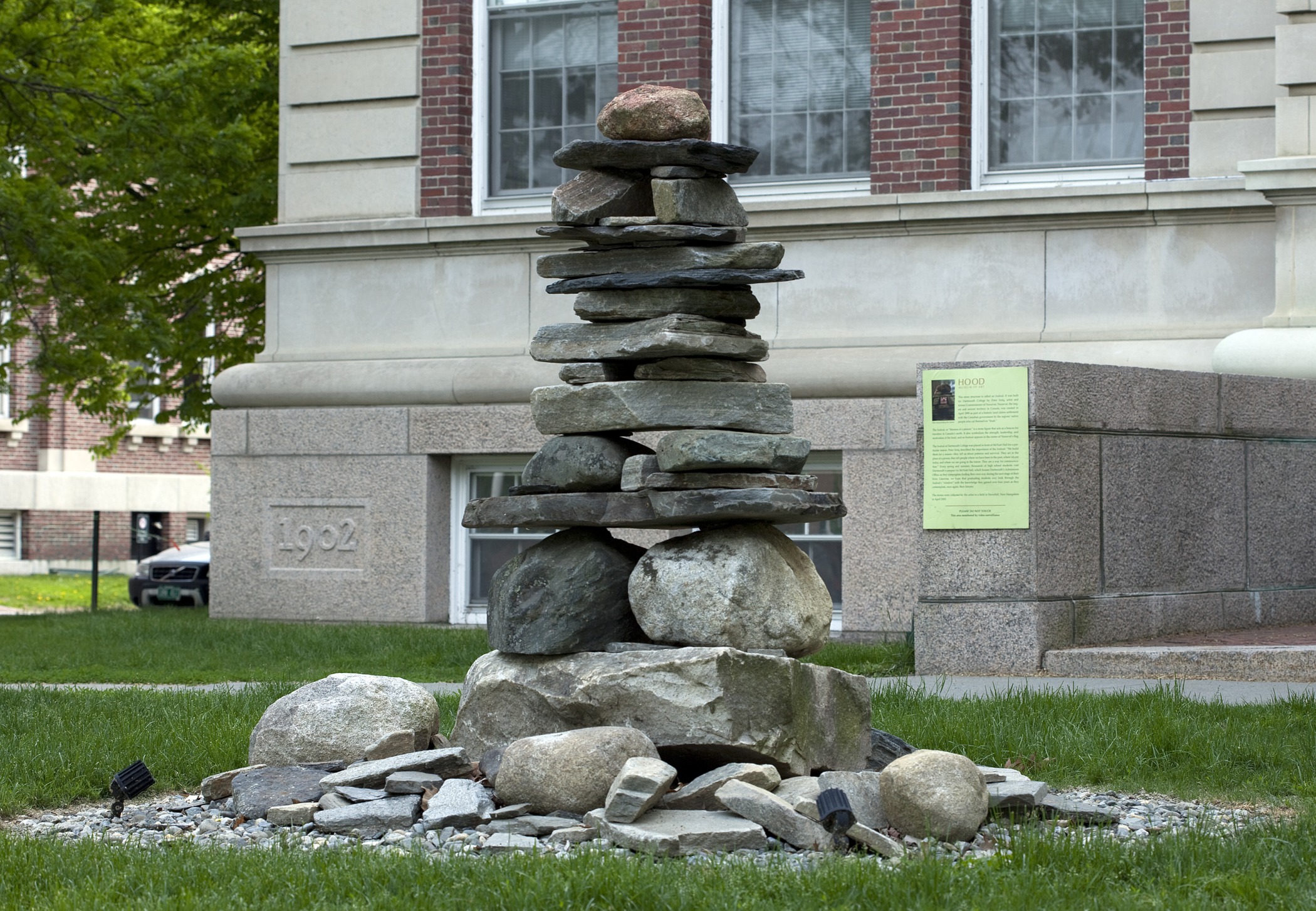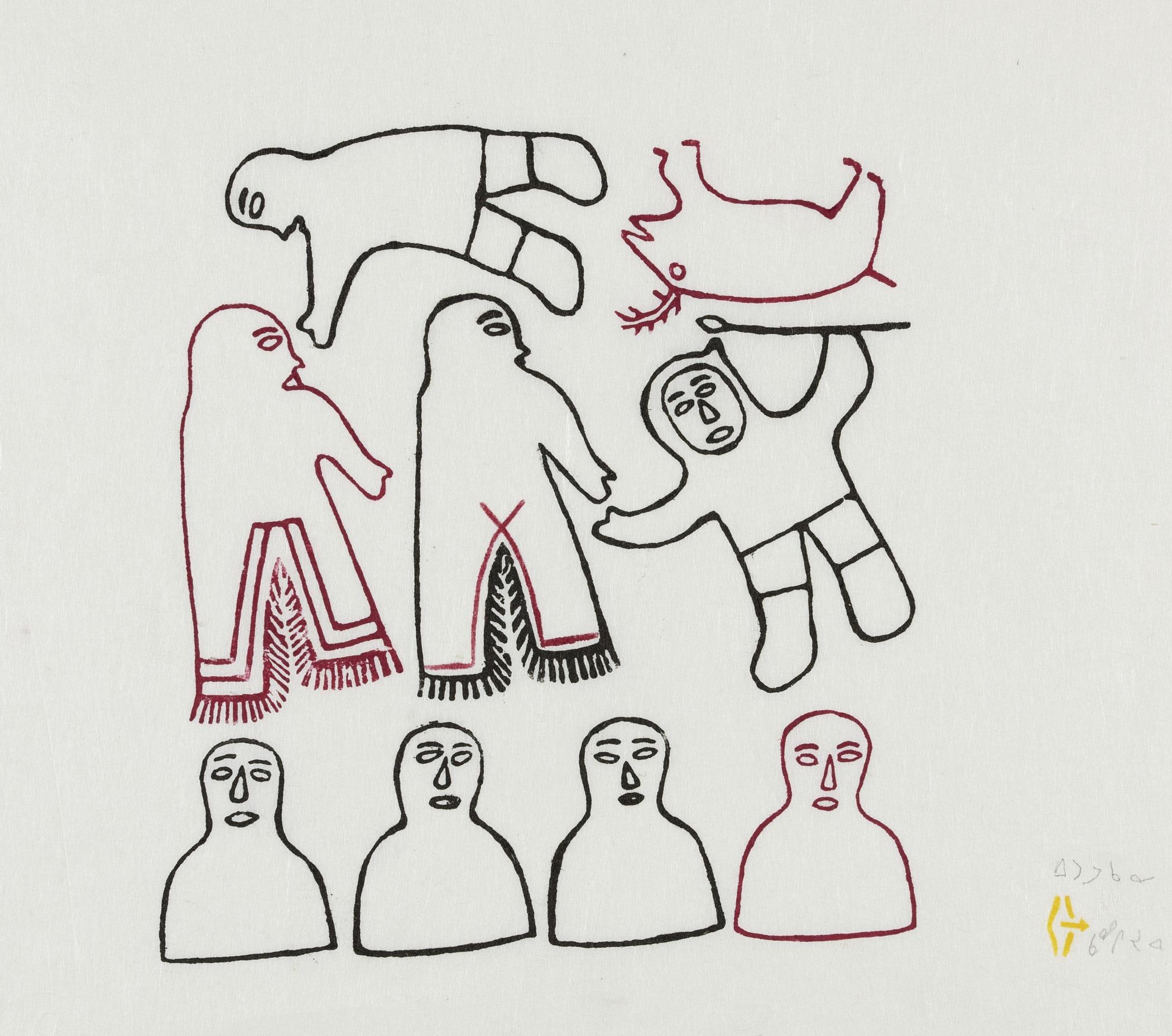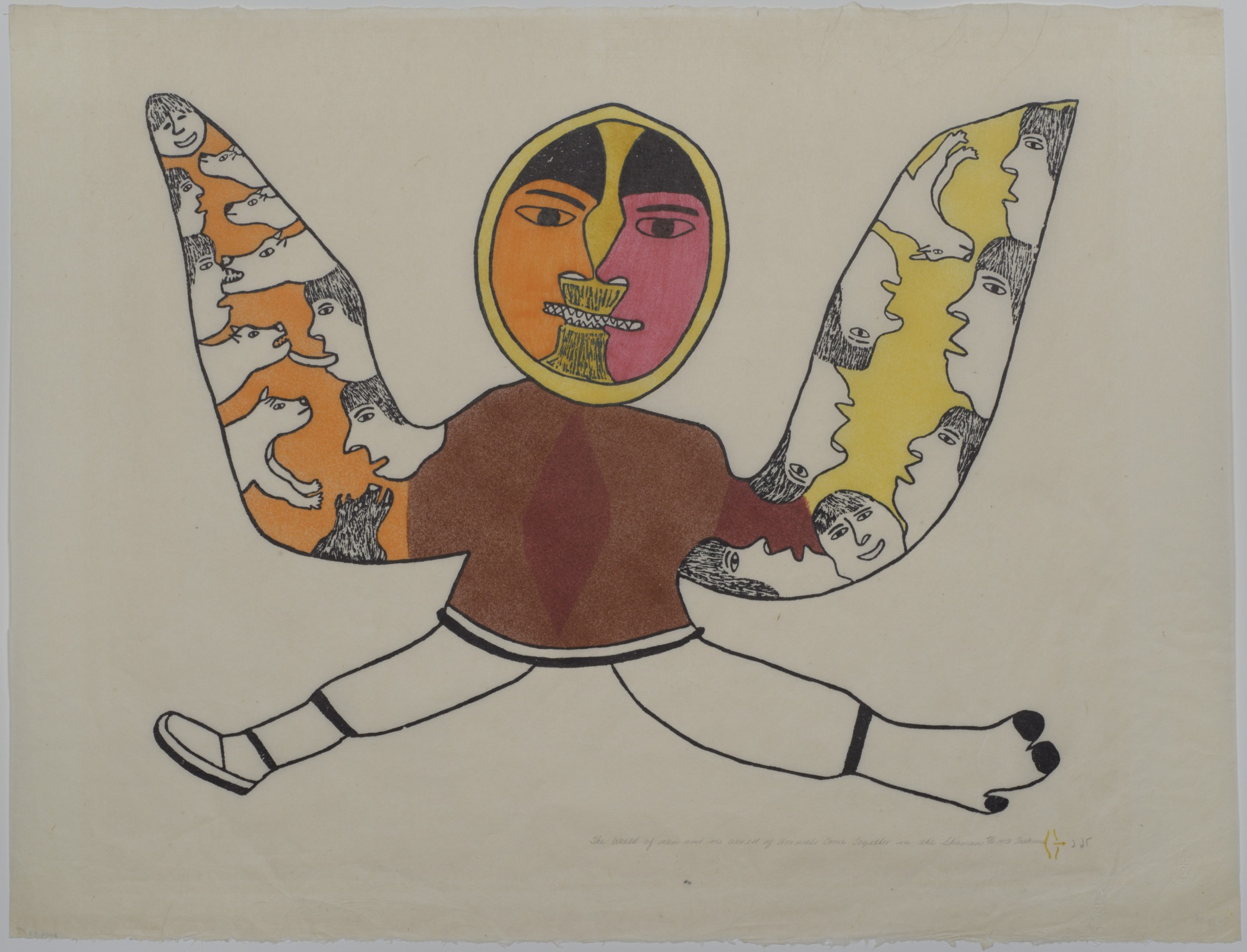Martha Ittulukatnak, Canadian (Inuit), 1912–1981
Ayaya
- 1972
- Stonecut print on paper
- 8 1/2 × 7 1/2 in.
Hood Museum of Art, Dartmouth College: Gift of Jane and Raphael Bernstein; 2011.64.16
visibilityLook & DiscussAyaya (Eye-yah-YAH) is a type of traditional song used as a means of storytelling between families and generations at Inuit gatherings. Often accompanied by drum dancing, ayaya songs are a crucial tool for preserving the traditional oral culture of the Inuit.
explore the object
The figures in the parkas, the caribou, and the hunter with the spear are the subject of the story. The women in the story wear longer, fringed parkas made of caribou fur. The men wear shorter, plain parkas.
The singers or the audience appear in a line below.
The singers are clearly sharing a story that involves caribou hunting. The people of Baker Lake, a community in northern Nunavut, Canada, are inland people. Unlike the people on the coast who hunted sea mammals throughout the winter, inland people traditionally depended on caribou for survival.
This print is an example of a new 20th-century art form in the Arctic known as stonecut printing. Through prints, contemporary artists share aspects of their culture with the outside world. We do not know the exact narrative or the significance of this story, which is private, but we can appreciate through this image the importance of community, song, and oral tradition to this artist and her people.
The symbol, or “chop” in the lower right-hand corner is used to signify Baker Lake prints. It is a simple drawing representing the bow and arrow used in traditional caribou hunting and Baker Lake, a body of water which is fed by two rivers.
meet the artist
Martha Ittulukatnak (It-too-lah-KAHT-nahk) lived a traditional nomadic lifestyle on the land until she was 49 years old. Like many others of her generation, she was forced to move into the settlement of Baker Lake to avoid starvation when the caribou herds changed their annual migration pattern away from her family’s traditional hunting grounds.
In the settlement, she had access for the first time to paper and drawing materials. She made pencil and crayon drawings inspired by her life and culture. These drawings served as the basis for a number of prints produced for sale by the Baker Lake Arts Cooperative. Her work is now in the collection of many museums.





